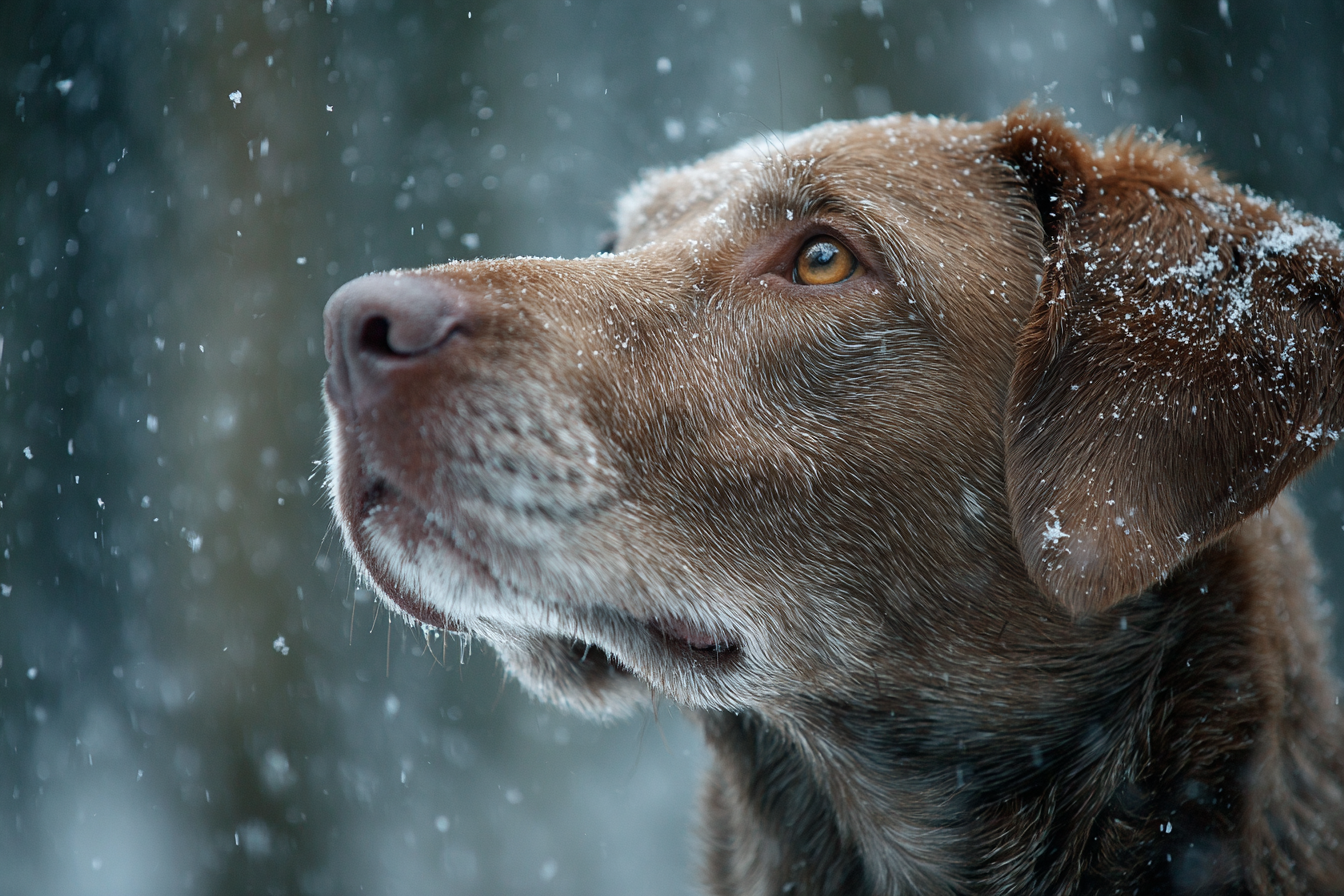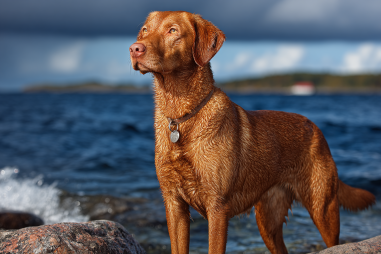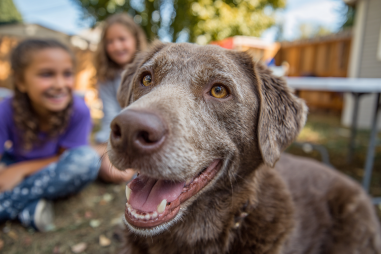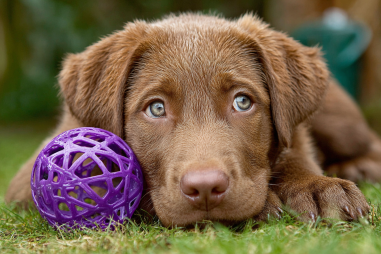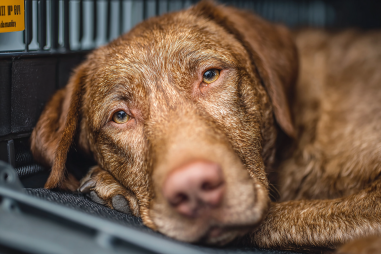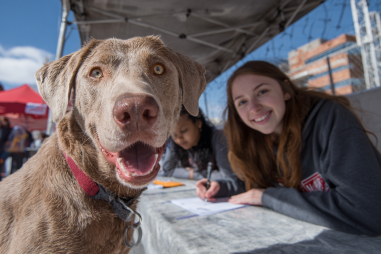Chesapeake Bay Retrievers are known for their intelligence, loyalty, and distinctive rugged coat that helps them thrive in various environments. However, their care needs can change significantly across seasons. Whether it’s the biting cold of winter or the sweltering heat of summer, ensuring your Chesapeake stays comfortable requires attention to seasonal changes in their environment. In this guide, we’ll walk you through key seasonal care tips to keep your Chesapeake Bay Retriever happy, healthy, and safe all year long.
Winter Care: Coat Protection and Warmth
During the winter months, your Chesapeake Bay Retriever’s thick, water-resistant double coat offers natural insulation against cold weather, but this alone isn’t enough to fully protect them from extreme cold. Their dense undercoat traps warmth close to the skin, aiding in insulation, but icy winds and snow can still leave your dog vulnerable.
To keep your Chesapeake comfortable in winter:
- Limit exposure: Avoid leaving your dog outside for extended periods during freezing temperatures. Shorter play and potty breaks are ideal.
- Provide shelter and warmth: If your dog spends any time outdoors, ensure they have a warm, insulated dog house or sheltered area away from wind and moisture.
- Use protective clothing: While many Chesapeakes don’t require sweaters or jackets due to their dense coat, older dogs, dogs with health issues, or those sensitive to cold may benefit from a dog coat during walks.
- Protect paws: Snow, ice, and road salt can irritate paws and cause cracking or chemical burns. Use dog booties or apply paw balm before walks to protect and moisturize paw pads.
- Dry thoroughly: After outdoor activities in snow or rain, dry your pup’s coat and paws completely to prevent skin irritation and chills.
Summer Care: Heat Safety and Hydration
Summertime presents a new set of challenges for Chesapeake Bay Retrievers, as their thick coats, which are ideal for cold water and harsh environments, can increase the risk of overheating in hot weather.
To help your Chesapeake stay safe during summer:
- Ensure plenty of fresh water: Always have clean water available, especially after exercise. Dehydration can quickly become dangerous.
- Provide shade and ventilation: During hot days, provide shaded areas for your dog to rest outdoors. Avoid leaving them in enclosed spaces such as cars or poorly ventilated rooms.
- Adjust exercise routines: Try to walk or play with your Chesapeake in the early morning or late evening when temperatures are cooler to avoid heatstroke.
- Watch for overheating signs: Heavy panting, drooling, weakness, or collapse are red flags. If you suspect heatstroke, cool your dog gradually with water and seek veterinarian help immediately.
- Consider grooming: While you shouldn’t shave your Chesapeake’s coat, which protects them from sunburn and overheating, regular brushing helps remove loose undercoat and improves airflow through the fur.
Spring and Fall Grooming Adjustments
Spring and fall are transitional seasons when your Chesapeake Bay Retriever’s coat goes through natural shedding cycles. These periods require focused grooming to keep your dog comfortable and healthy.
During spring:
- Prepare for shedding: The thicker undercoat sheds as temperatures rise. Regular brushing with an undercoat rake or de-shedding tool will help remove loose fur and reduce allergens around your home.
- Check for skin irritations: As the dense coat thins, watch for hot spots or rashes, which can develop from moisture or allergies.
During fall:
- Encourage thickening coat growth: Gentle brushing stimulates skin and promotes a healthy, thick undercoat for winter protection.
- Watch for ticks and pests: Both spring and fall bring parasites like ticks and fleas. Regular topical prevention treatments and thorough checks after outdoor activities are essential.
Seasonal Health Concerns
Your Chesapeake Bay Retriever’s health may fluctuate with the seasons, so awareness is key to prevention and early detection of common seasonal ailments.
- Winter-related issues: Hypothermia and frostbite are risks in extreme cold. Older dogs and those with joint issues might suffer from arthritis flare-ups due to chilly weather.
- Summer hazards: Heat exhaustion, dehydration, and sunburn (especially on lightly pigmented areas) can affect your dog. Hot pavement can also burn paw pads.
- Allergies: Spring often triggers allergies related to pollen and mold spores, causing itching, redness, and ear infections.
- Parasites: Fleas and ticks are more prevalent in spring and fall, increasing the risk of diseases such as Lyme disease and ehrlichiosis.
Exercise Considerations in Different Weather
Regular exercise is essential for Chesapeake Bay Retrievers to maintain their physical and mental health. However, variations in weather require adjustments to their activity type, duration, and timing.
In cold weather:
- Opt for brisk walks or play sessions in moderate weather rather than prolonged outdoor exposure in freezing temps.
- Shorten outdoor times if you notice shivering or reluctance to continue.
- Indoor games involving fetch or puzzle toys can keep your dog active without risking cold-related harm.
In hot weather:
- Schedule early morning or late evening activities to avoid peak heat.
- Encourage swimming, which is excellent for Chesapeakes given their love of water and it helps them stay cool.
- Monitor your dog closely for fatigue or distress signs, and take breaks in cool areas.
During spring and fall, moderate outdoor exercise is often ideal, but always gauge your dog’s comfort level and adjust accordingly.
Keeping Your Chesapeake Comfortable Through the Seasons
Seasonal care for Chesapeake Bay Retrievers revolves primarily around understanding the impact of environmental changes on their thick double coat and overall health. With thoughtful grooming, appropriate protection against temperature extremes, and careful monitoring of their exercise and hydration needs, you can help your Chesapeake thrive all year long.
By tuning into your dog’s behavior and body language and making adjustments as the seasons change, you ensure that your Chesapeake stays not only physically healthy but also happy and comfortable. After all, a well-cared-for Chesapeake Bay Retriever is a joyful companion ready to share adventures come rain, snow, or sunshine!

